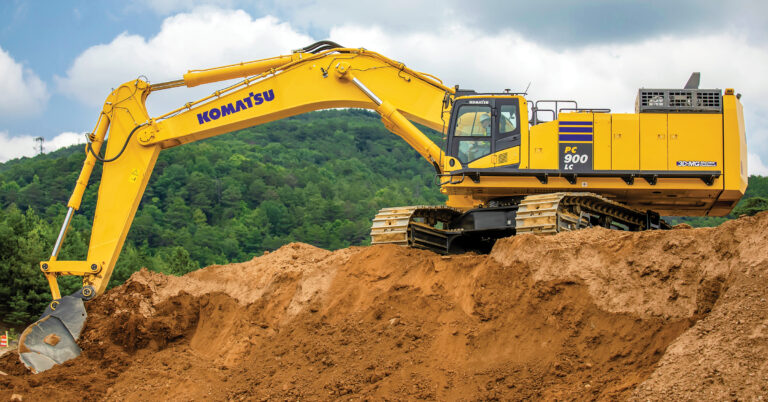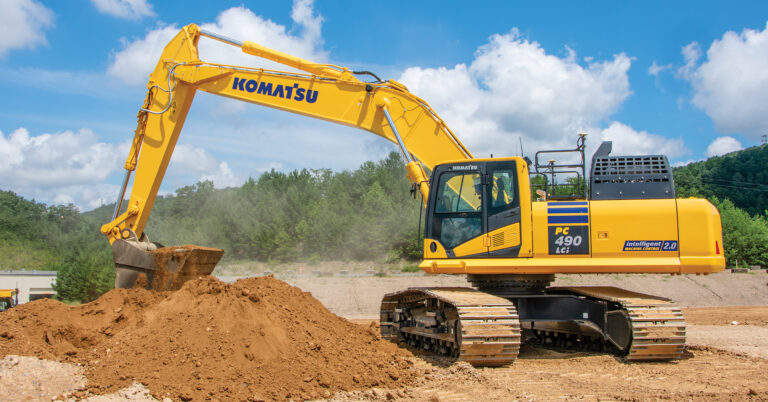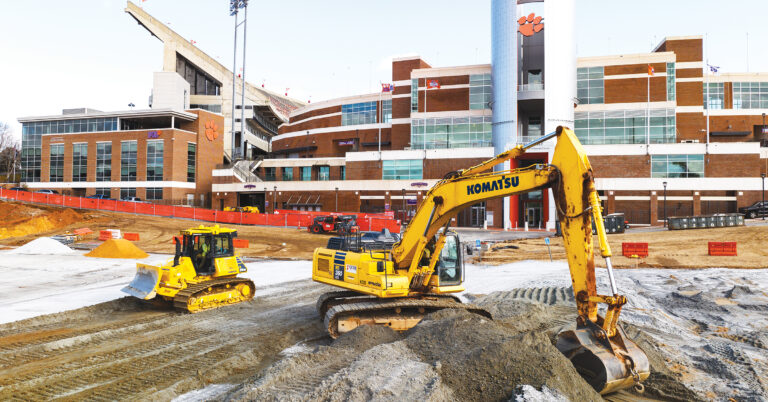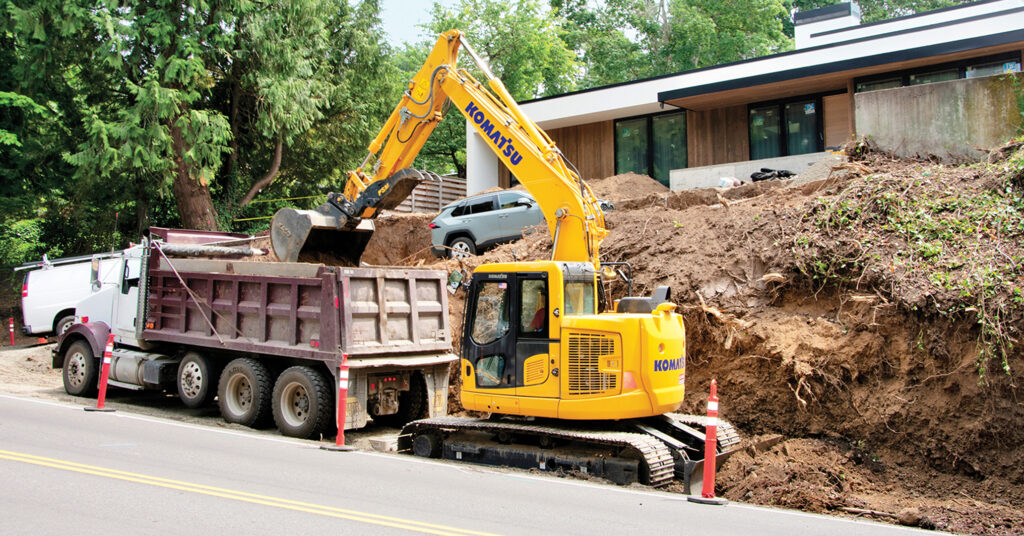
Which tight tail swing excavator is right for the job?
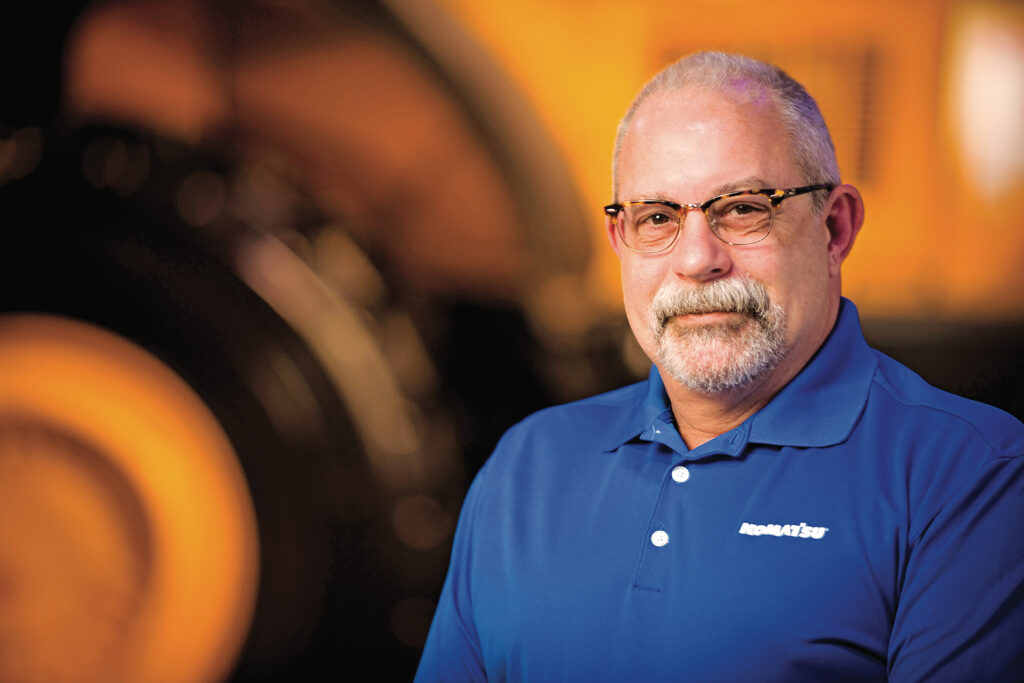
Ensuring high production when digging in tight spaces and confined job sites can be challenging. Machines with traditional counterweights may not be ideal because of the likelihood they could swing into an obstruction, making tight tail swing excavators a much better fit. However, with so many tight tail swing sizes and models available, choosing the right one for the job takes some careful consideration.
“Tight tails allow operators to be more efficient because they typically have better situational awareness and can concentrate on the task at hand while reducing the chances of swinging into an obstruction or into a lane of traffic,” stated Kurt Moncini, Senior Product Manager, Komatsu. “Typically, the upper structure is revolving within the confines of the undercarriage, which is why they are great for a variety of tasks in urban areas, or where space is limited.”
What’s the digging depth?
According to Moncini, digging depth is an important consideration when choosing the right-sized tight tail swing excavator.
“Pipe typically comes in multiples of 8-foot sections, so taking that into consideration, I always like to look at the 8-foot level bottom digging depth because that’s the maximum depth I can dig and excavate an 8-foot flat bottom section of trench,” said Moncini. “As an example, if the required pipe run trench depth is 10 feet, my most efficient machine size will be one that can excavate an 8-foot level bottom to that depth. I need to size the machine accordingly and try to go with the smallest tight tail that will do the job most efficiently.”
How much do I have to lift?
Lift capacity is another major factor in choosing the right excavator. While you want to be able to move the machine as little as possible, you need to consider what you may need to move on-site in addition to digging.
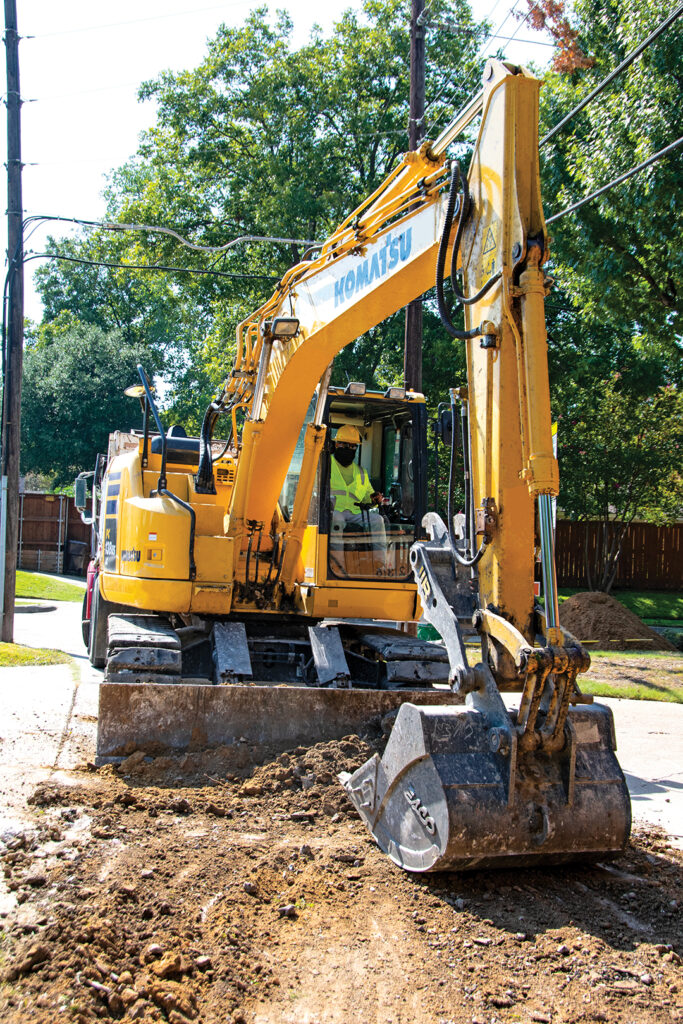
“If you are excavating utility trenches in an urban environment, there is a good chance you will have to handle trench boxes and set steel plates to cover up the trench at night, or you may have to pick up and install heavy concrete pipe or structures,” said Moncini. “It’s vital to have a machine with sufficient lift capacity to handle the job. Ideally, I really want to be able to handle over the side as much as I can lift in front.”
Moncini added, “The heavier the required loads become, the bigger the machine I’m going to need. Having a machine that can also lift the materials off the trailer when they arrive is important too. I need to be able to lift, handle and place materials until it’s time to use them, then have the ability to rehandle and lay them in the trench.”
Do I want versatility?
“Most smaller machines come standard with a blade, which extends versatility,” said Moncini. “The ability to push material and backfill is an added advantage and may be able to eliminate an extra machine on the job.”
Moncini also added that a blade can help you get better over-the-front lift capacity.
Additional tight tail swing versatility can be achieved by equipping the excavators with attachments such as breakers, but you must properly size them to the machine.
“If the job calls for breaking up old pavement or other concrete structures, you should first size the breaker for the task, then ensure the excavator is big enough to handle it and has the correct hydraulic flow to operate it,” said Moncini. “There are a wide range of attachments — from compactors to mowers and more — that you can use with a tight tail swing. The good news is that most are already plumbed and ready for attachments.”
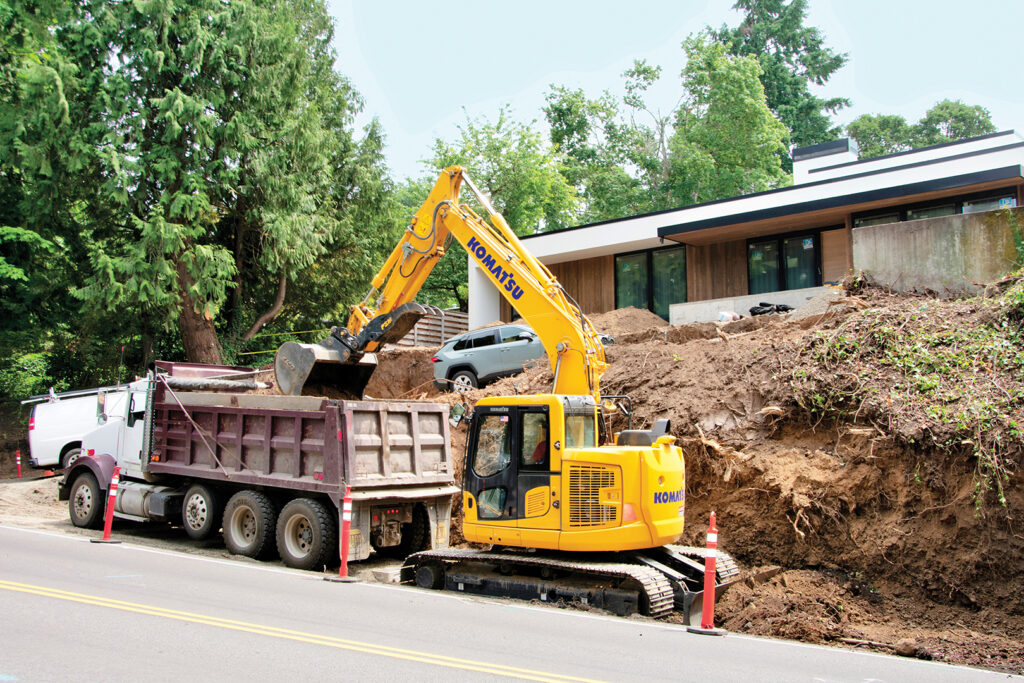
Which boom design is right for me?
Komatsu manufactures eight tight tail swing models, ranging in size from the approximately 6,800-pound, 24.4-horsepower PC30MR-5 to the roughly 54,000-pound, 165-horsepower PC238USLC-11. There are five MR (minimum-radius) models and three US (ultra-short) models.
“The MR excavators have a swing boom, and the US models have a standard boom,” Moncini noted. “Our MR design allows the operator to pivot the boom left or right to get right next to a structure and dig parallel to the tracks, so they are much more versatile. The advantage of a standard boom is that it’s a little lower price point. Additionally, the standard boom overextends toward the back of the machine to tuck the bucket in tight.”
What about tracks?
Track selection may play an important role when working in urban environments. You want to avoid breaking up pavement, damaging sidewalks and ruining grassy areas.
“Having to fix an existing surface could be a major hit to your profit,” said Moncini. “Our smaller tight tail swing excavators come standard with rubber-belted tracks. Not only do they minimize ground disturbance, but they are quieter and faster than steel tracks. Road liners, or conventional tracks with rubber pads, are very popular in our midsized to larger models when working on improved surfaces.”
Who can I talk to?
For additional information, Moncini suggests consulting with your Komatsu distributor.
“Our distributors have the knowledge and expertise to help you determine the right-sized machine to most effectively get the job done,” said Moncini. “Tight tail swings can be excellent tools for limited-space job sites and can also offer high production in open areas too. If you are not using them, consider checking them out to increase your versatility.”
Editor’s Note: To learn more about Komatsu’s tight tail swing excavators, visit https://www.komatsu.com/en/products/excavators.

